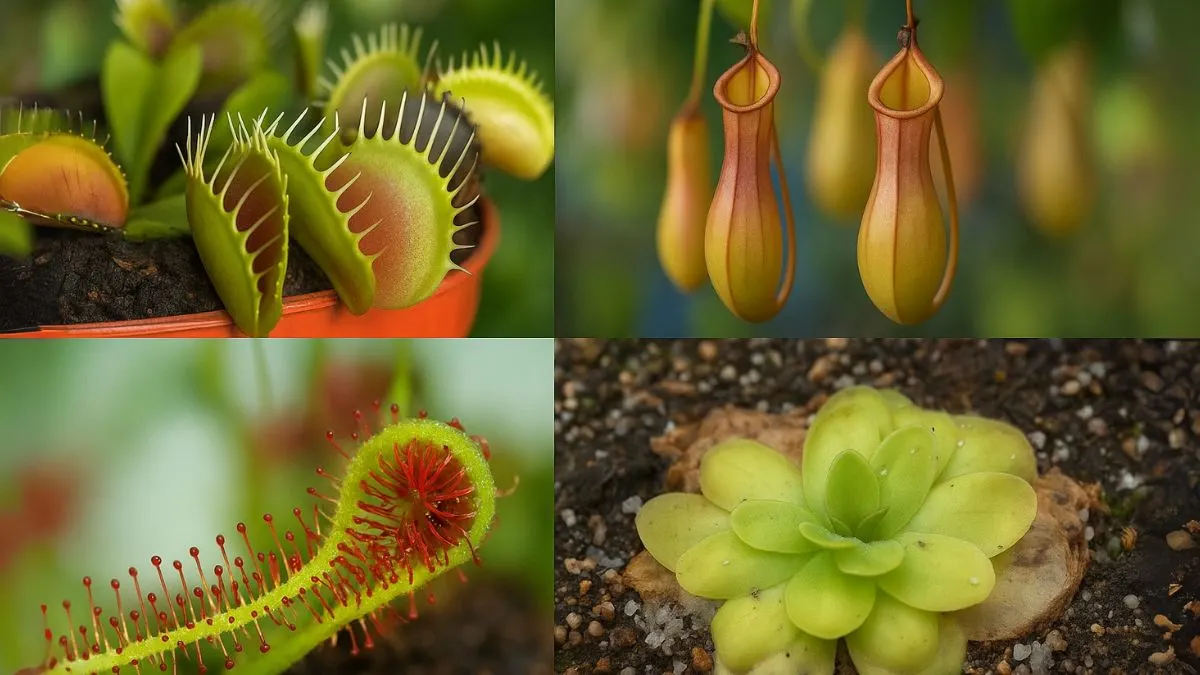Most of us think of plants as peaceful, sun-loving beings. But what if I told you some plants eat animals? Welcome to the captivating world of insectivorous plants. These are not your everyday roses or lilies. Instead, they are specialized plants that supplement their nutrition by trapping and digesting insects and other small prey.
For years, I thought these plants only existed in science fiction. But after growing a Venus Flytrap on my windowsill in Toronto, I realized they are very real, very clever, and incredibly fun to observe.
What Makes Carnivorous Plants Unique?

Unlike ordinary plants, carnivorous plants utilize a variety of digestive enzymes to break down their prey. While most greenery absorbs nutrients from soil, these plants thrive in nutrient-poor environments like bogs and wetlands. To survive, they developed an extraordinary trick—hunting.
In fact, carnivorous plants reverse the order we expect in nature. Instead of animals eating plants, here, plants feast on animals. It’s no wonder many people find them both eerie and enchanting.
Iconic Species of Insectivorous Plants
- Venus Flytrap: No discussion is complete without the famous Venus Flytrap plants. They stand out for their unusual carnivorous nature—their leaves snap shut like jaws the moment an insect touches their trigger hairs. Watching one trap a fly feels like witnessing nature’s perfect engineering.
- Pitcher Plants: Shaped like tubes, pitcher plants lure insects with sweet nectar. Once inside, slippery walls and digestive fluids ensure escape is impossible. These plants are known for chowing down on insects in the most efficient way.
- Sundews: Covered in sticky tentacles, sundews sparkle in sunlight. But these droplets aren’t dew—they’re glue. Small insects get stuck, and the leaves curl in to digest them.
- Butterworts: These plants look harmless with their flat, greasy leaves. But their surfaces act like natural flypaper, catching gnats and midges effortlessly.
Also Read: Ground Covers That Attract Nature’s Pest Patrol
How Do They Digest Their Prey?
It’s not just about trapping insects. Carnivorous plants utilize a variety of digestive enzymes like proteases and phosphatases. These enzymes break down proteins and other nutrients into absorbable forms. In other words, they’re tiny chemical factories, extracting nitrogen and minerals from prey that the soil cannot provide.
Why Did They Evolve This Way?
In habitats where soil lacks nutrients, survival required creativity. So, these plants have evolved remarkable adaptations that allow them to capture and digest animal prey.
Think of them as pioneers—plants that refused to give up and instead redefined what it means to feed. It’s no exaggeration to say that carnivorous plants have turned the evolutionary tables on animals.
Growing Insectivorous Plants at Home
These plants aren’t just wild wonders; they can thrive in homes across Canada, the USA, and beyond. Here’s a quick care guide:
Plant Type |
Light Needs |
Watering |
Special Note |
Venus Flytrap |
Full sun or bright indoor light |
Distilled/rainwater |
Avoid tap water |
Pitcher Plants |
Direct sunlight |
Keep soil damp |
Prefers acidic soil |
Sundews |
Bright, indirect light |
High humidity |
Excellent for terrariums |
Butterworts |
Indirect light |
Moist soil |
Good for catching gnats indoors |
From personal experience, keeping them indoors not only controls pests but also becomes a conversation starter. Visitors are often amazed to see a plant “eating” a mosquito!
Fun Facts to Deepen the Fascination
- Some species can trap small frogs or even mice.
- The largest pitcher plant, Nepenthes rajah, can hold up to two liters of liquid.
- Charles Darwin was one of the first to study these plants seriously, calling them “the most wonderful plants in the world.”
Also Read: How to Grow Larkspur for Towering Color and Pollinator Traffic
The Poetry of Carnivory in Plants
Beyond science, there’s something oddly poetic about these plants. They are rebels in the green kingdom, reminders that survival often requires bending the rules. To me, they symbolize resilience—the ability to adapt and thrive where others fail.
Every time I see my Venus Flytrap plants snap shut, I’m reminded that nature is full of surprises. Sometimes, those surprises come with teeth.
Conclusion
The world of insectivorous plants is a reminder of how diverse and adaptable life can be. These specialized plants that supplement their nutrition by trapping and digesting insects and other small prey not only amaze us with their beauty but also with their strategy for survival.
From Venus Flytrap plants to pitchers and sundews, each species shows us that carnivorous plants reverse the order we expect in nature—and do it with style. Whether you’re a gardener in the USA, Canada, or anywhere in the world, bringing one home lets you witness evolution in action.
So next time you think plants are just quiet bystanders, remember: in the captivating world of insectivorous plants, they’re hunters too.






